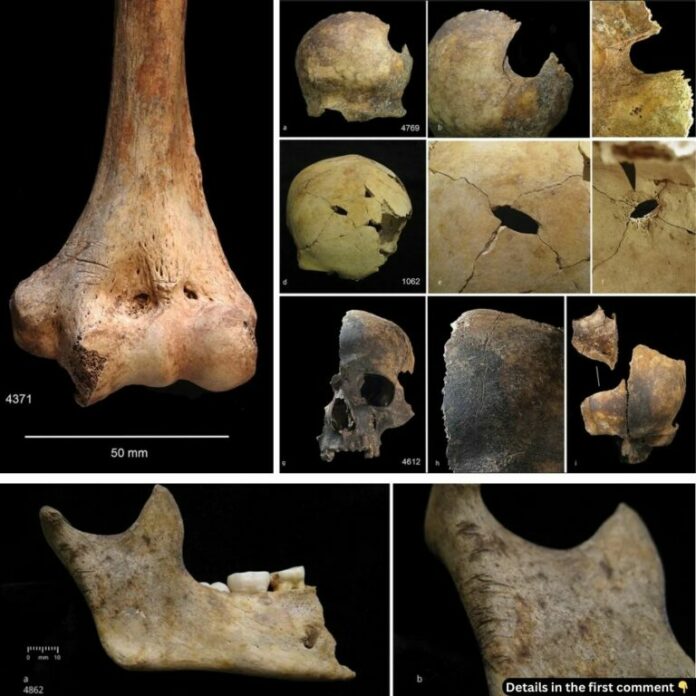In a shocking archaeological discovery beneath Somerset, England, researchers have uncovered evidence of a brutal massacre and ritual cannibalism dating back to the Early Bronze Age. The findings at Charterhouse Warren have dramatically reshaped our understanding of prehistoric Britain and human behavior.
The Grisly Discovery

At the bottom of a deep shaft, archaeologists made a chilling find: the butchered remains of 37 individuals. These weren’t typical Bronze Age burials – instead of careful, respectful treatment, the bodies showed signs of deliberate dehumanization. Over 3,000 bones and fragments were recovered, bearing clear evidence of blunt force trauma, cut marks, and fractures consistent with systematic butchery.
A Tale Written in Bones

The analysis revealed a horrifying story. The victims’ bones were found intermingled with cattle remains, suggesting a ritualistic element to the massacre. Cut marks indicated flesh removal, while broken bones pointed to marrow extraction. Professor Rick Schulting of Oxford’s School of Archaeology notes that these acts occurred shortly after death, ruling out natural decomposition or animal scavenging.
Beyond Simple Violence
This discovery challenges the conventional view of the Early Bronze Age (circa 2500–1500 BCE) as a relatively peaceful period. The violence at Charterhouse Warren wasn’t merely about survival – it appeared to be a deliberate attempt to strip victims of their humanity by treating their remains like animal carcasses.
The Mystery Deepens
Adding another layer to this dark tale, researchers found evidence of plague bacteria in the teeth of two children among the remains. While the connection between the disease and the massacre remains unclear, it raises intriguing questions about how fear and disease might have influenced social tensions in prehistoric communities.
A Window into the Past

The site has parallels with other archaeological discoveries, such as the earlier ritualistic cannibalism at Gough’s Cave in Cheddar Gorge. However, while Gough’s Cave showed signs of reverence for the dead, Charterhouse Warren reveals a darker motivation rooted in social conflict and degradation.
Modern Implications
These findings force us to confront uncomfortable truths about human nature. According to Professor Schulting, the site serves as a powerful reminder that prehistoric societies were capable of both remarkable achievements and terrible cruelty – a duality that continues to shape human behavior today.
Video
Beyond the Violence

The Charterhouse Warren discovery is part of a broader archaeological picture that includes more positive findings, such as evidence of Bronze Age copper exploitation in Granada, Spain, and artistic achievements like the discovery of an 1,800-year-old gold ring in France. These diverse discoveries paint a complex picture of prehistoric human society.
Legacy of the Past

As researchers continue to study this enigmatic site, the questions it raises about social dynamics, conflict, and human nature remain relevant today. The Charterhouse Warren massacre stands as a sobering reminder that the capacity for organized violence and dehumanization has deep roots in human history, while also providing valuable insights into the complex social structures of our ancestors.

